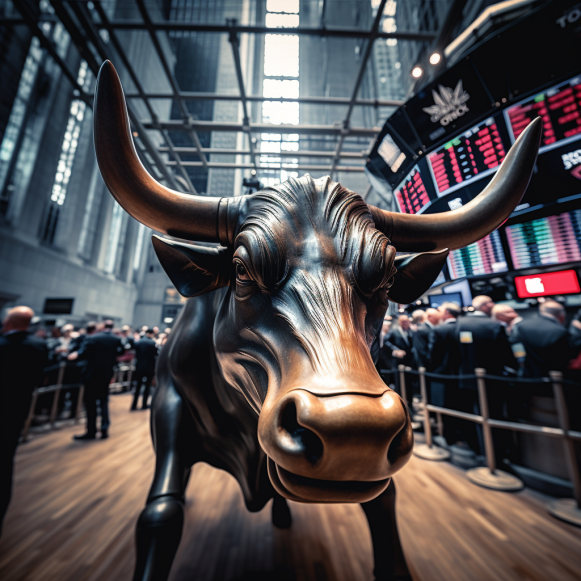Goldman Sachs analyzed 5,000 IPOs from the past 25 years and found the 2 characteristics new stocks share that indicate they will outperform the market

- IPOs have seen a long drought after the deluge of new public companies between 2020 and 2021.
- Goldman Sachs believes more IPOs are on their way, but not all will outperform.
- CIO David Kostin broke down the two reasons why some IPOs thrive, and how to spot day-one winners.
After the pandemic, when the market was flooded with easy money, investor sentiment was high, and new investment vehicles kept the floodgates of newly public companies wide open, the IPO market was red hot. According to Goldman Sachs, over 400 initial public offerings and 810 SPACs took place between 2020 and 2021.
But then the money dried up as interest rates rose, sentiment plummeted, and SPACs became extinct. According to Goldman Sachs data, there have been only 32 IPOs in the last 21 months
However, after a long, cold winter, the IPO market has begun to thaw. According to a recent client note from Goldman Sachs chief investment officer David Kostin, the macroeconomic conditions conducive to successful IPOs have begun to return — and with the strong showings of both Arm and Instacart this week, more IPOs may be on the way.
However, more isn’t always better, and investors must be smarter than in the past in distinguishing between overhyped IPOs that don’t rise much further than their first-day pops and quality investments.
How to identify an IPO that will perform well on its first day of trading
While investors may miss the IPO heyday of 2020 and 2021, the truth is that investing in the companies that went public at the time hasn’t resulted in particularly high returns.
“Indeed, the 2020-21 wave of IPOs had abysmal performance relative to history,” wrote Kostin. “The median IPO completed during 2020-21 lagged the Russell 3000 by 48 percentage points in the first year following its IPO (vs. -20 percentage points for the median deal since 1995), with only 18% outperforming (vs. 35% for all IPOs completed since 1995.”
Kostin added that the companies that went public during these years were not necessarily bad investments. Interest rates fell early in this period, enticing private companies to go public; however, when interest rates rose later, those companies were left in a bind as multiples contracted, valuations declined, and shares fell.
However, you’d be forgiven for forgetting that most stocks that went public recently did not fare well in the long run, despite flying high on day one.
According to Kostin, stocks that went public between 2020 and 2021 typically saw shares rise 15% on the first day of trading, whereas stocks that went public between 1995 and 2019 rose only 10% on the first day.
And it turns out that stocks that have a strong first-day price increase tend to have a few months of price appreciation after that. “IPOs that gain more than 50% on their first day of trading typically gain an additional 5% over the next three months, compared to a median three-month return of just 1% for deals that gain less than 50%,” Kostin wrote. “IPOs that fall on their first day typically fall by an additional 4% over the subsequent three months.”
So, how do you spot a stock that will skyrocket on day one? Keep an eye on the expected price range for shares.
“Since 1995, IPOs pricing above the range have typically risen by 38% on their first trading day,” Kostin wrote. This trend has only gotten stronger over time; since 2020, companies that priced their shares above their expected range saw a 43% increase on day one.
“However,” Kostin added, “performance immediately following the IPO is not a strong signal for long-term relative returns.”
2 reasons why an IPO is a good investment
While riding the day-one wave may feel good, investors are rarely pleased to see their shiny new stock fall in the months that follow. So, how do you identify an IPO that will withstand the test of time?
Kostin believes the answer lies in two key factors after analyzing 5,000 IPOs over the course of 25 years: sales growth and profitability.
“While most IPOs underperform,” Kostin wrote, “deals that outperform share two characteristics: greater than 40% annualized sales growth in their second and third years after flotation and positive net income by their eighth quarterly earnings report.” “Two-thirds of IPOs with these characteristics outperformed the Russell 3000 in their first three years, with the typical company outperforming by 22 pp.”
According to Kostin, the easy monetary policies of 2020 and 2021 prompted a flurry of IPOs by companies that wanted to capitalize on the opportunity but had low sales growth and were unprofitable. With such disadvantages, it’s no surprise that many of those companies failed shortly after going public.
Profitability, according to Kostin, will be especially important for new companies entering markets in the near future.
“We anticipate that profitability will be particularly important for upcoming IPOs.” With capital markets closed for nearly two years, unprofitable businesses have been forced to fund operations with cash balances,” Kostin wrote. “As a result of this experience, investors now prefer stocks with high levels of current profitability.”
He also cautioned investors to proceed with caution when it comes to IPOs with high valuations. In the two years between 2020 and 2021, no IPO with an initial price-to-NTM sales ratio greater than 15 outperformed the Russell 3000.






